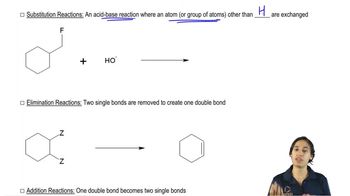Draw the elimination products that are formed when 3-bromo-3-methyl-1-butene reacts with
b. CH3OH
 Verified step by step guidance
Verified step by step guidance Verified video answer for a similar problem:
Verified video answer for a similar problem:



 2:27m
2:27mMaster Overview of the flowchart. with a bite sized video explanation from Johnny
Start learning